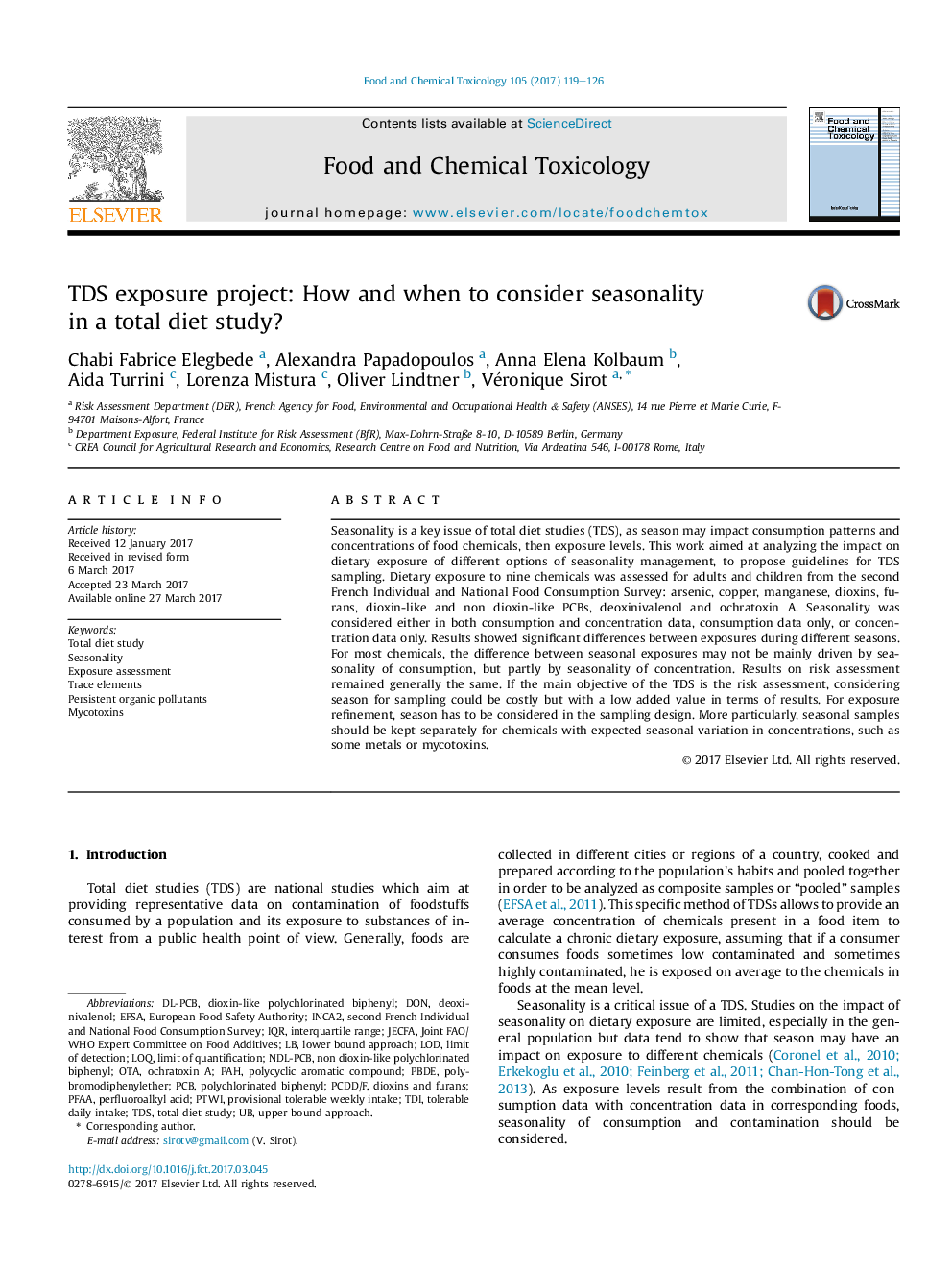| کد مقاله | کد نشریه | سال انتشار | مقاله انگلیسی | نسخه تمام متن |
|---|---|---|---|---|
| 5560178 | 1561740 | 2017 | 8 صفحه PDF | دانلود رایگان |

- Seasonality is a key issue of total diet studies (TDS).
- Seasonality management options have been tested for a TDS sampling and exposure assessment.
- The differences between seasonal exposures may not be mainly driven by seasonality of consumption.
- The differences between seasonal exposures may be mainly driven by seasonality of concentration.
- Seasonality in a TDS sampling plan has to be considered according to the objective and to the chemical studied.
Seasonality is a key issue of total diet studies (TDS), as season may impact consumption patterns and concentrations of food chemicals, then exposure levels. This work aimed at analyzing the impact on dietary exposure of different options of seasonality management, to propose guidelines for TDS sampling. Dietary exposure to nine chemicals was assessed for adults and children from the second French Individual and National Food Consumption Survey: arsenic, copper, manganese, dioxins, furans, dioxin-like and non dioxin-like PCBs, deoxinivalenol and ochratoxin A. Seasonality was considered either in both consumption and concentration data, consumption data only, or concentration data only. Results showed significant differences between exposures during different seasons. For most chemicals, the difference between seasonal exposures may not be mainly driven by seasonality of consumption, but partly by seasonality of concentration. Results on risk assessment remained generally the same. If the main objective of the TDS is the risk assessment, considering season for sampling could be costly but with a low added value in terms of results. For exposure refinement, season has to be considered in the sampling design. More particularly, seasonal samples should be kept separately for chemicals with expected seasonal variation in concentrations, such as some metals or mycotoxins.
Journal: Food and Chemical Toxicology - Volume 105, July 2017, Pages 119-126